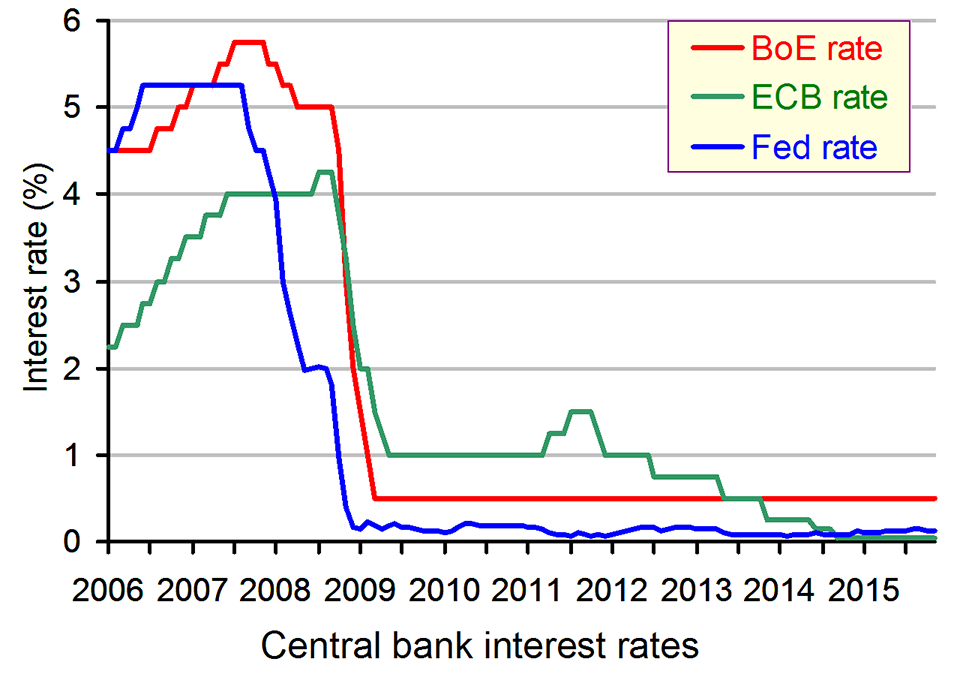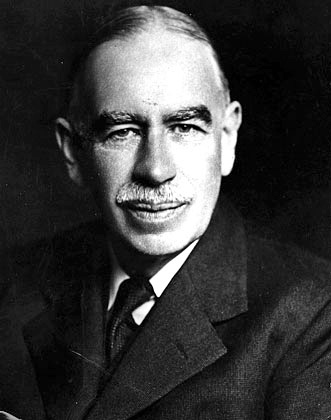 Sales during the weeks leading up to Christmas often make a significant contribution to retailers’ profits. For many consumers, it is a time to spend money on food, presents and decorations and this often means increased borrowing.
Sales during the weeks leading up to Christmas often make a significant contribution to retailers’ profits. For many consumers, it is a time to spend money on food, presents and decorations and this often means increased borrowing.
Data indicate that borrowing by consumers in the lead-up to Christmas increased by the biggest amount for almost 8 years: a figure of £1.5 billion. As a result, there were likely to have been many happy families at Christmas, with lots of gifts being exchanged. But what does this mean for the New Year? There are concerns about the increase we will see in consumer debt throughout 2016 and the number of borrowers who will, perhaps, be unable to repay their debts.
Could this significant increase in borrowing be a signal that we haven’t learnt from our past? This article from BBC News considers the borrowing data and their implications.
Borrowing jumped ahead of Christmas, Bank of England says BBC News, Brian Milligan (4/01/16)
Questions
- Is borrowing good or bad for the economy? Explain your answer.
- If borrowing is good for the economy, why are there concerns about the current level of borrowing?
- How will this higher level of borrowing affect aggregate demand? Use an AD/AS diagram to explain the impact this will have.
- Could this higher level of borrowing affect unemployment and inflation? In what ways?
- If interest rates had been higher, do you think the level of consumer borrowing would have been lower?
 First the IMF in its World Economic Outlook, then the European Commission in its Economic Forecasts (see also) and now the OECD in its Economic Outlook (see also) – all three organisations in the latest issues of their 6-monthly publications are predicting slower global economic growth than they did 6 months previously. This applies both to the current year and to 2016. The OECD’s forecast for global growth this year is now 2.9%, down from the 3.7% it was forecasting a year ago. Its latest growth forecast for 2016 is 3.3%, down from the 3.9% it was forecasting a year ago.
First the IMF in its World Economic Outlook, then the European Commission in its Economic Forecasts (see also) and now the OECD in its Economic Outlook (see also) – all three organisations in the latest issues of their 6-monthly publications are predicting slower global economic growth than they did 6 months previously. This applies both to the current year and to 2016. The OECD’s forecast for global growth this year is now 2.9%, down from the 3.7% it was forecasting a year ago. Its latest growth forecast for 2016 is 3.3%, down from the 3.9% it was forecasting a year ago.
Various reasons are given for the gloomier outlook. These include: a dramatic slowdown in global trade growth; slowing economic growth in China and fears over structural weaknesses in China; falling commodity prices (linked to slowing demand but also as a result of increased supply); austerity policies as governments attempt to deal with the hangover of debt from the financial crisis of 2007/8; low investment leading to low rates of productivity growth despite technological progress; and general fears about low growth leading to low spending as people become more cautious about their future incomes.
 The slowdown in trade growth (forecast to be just 2% in 2015) is perhaps the most worrying for future global growth. As Angel Gurría, OECD Secretary-General, states in his remarks at the launch of the latest OECD Economic Outlook:
The slowdown in trade growth (forecast to be just 2% in 2015) is perhaps the most worrying for future global growth. As Angel Gurría, OECD Secretary-General, states in his remarks at the launch of the latest OECD Economic Outlook:
‘Global trade, which was already growing slowly over the past few years, appears to have stagnated and even declined since late 2014, with the weakness centering increasingly on emerging markets, particularly China. This is deeply concerning as robust trade and global growth go hand in hand. In 2015 global trade is expected to grow by a disappointing 2%. Over the past five decades there have been only five other years in which trade growth has been 2% or less, all of which coincided with a marked downturn of global growth.’
So what policies should governments pursue to stimulate economic growth? According to Angel Gurría:
‘Short-term demand needs to be supported and structural reforms to be pursued with greater ambition than is currently the case. Three specific actions are key:
|
|
| • |
First, we need to resist and turn back rising protectionism. Trade strengthens competition and investment and revs up the “diffusion machine” – the spread of new technologies throughout the economy – which will ultimately lift productivity. |
| • |
Second, we need to step up structural reform efforts, which have weakened in recent years. And here, I mean the whole range of structural reforms – education, innovation, competition, labour and product market regulation, R&D, taxes, etc. |
| • |
Third, there is scope to adjust public spending towards investment. If done collectively by all countries, if the sector and projects chosen have high multipliers, and if combined with serious structural reforms, stronger public investment can give a boost to growth and employment and not increase the relative debt burden.’ |
 On this third point, the OECD Economic Outlook argues that ‘the rationale for such investments is that they could help to push economies onto a higher growth path than might otherwise be the case, at a time when private investment growth remains modest.’
On this third point, the OECD Economic Outlook argues that ‘the rationale for such investments is that they could help to push economies onto a higher growth path than might otherwise be the case, at a time when private investment growth remains modest.’
‘Collective action to increase public investment can be expected to boost the initial domestic multiplier effects from the stimulus, since private investment and exports in each economy will benefit from stronger demand in other economies. …the multiplier effects from an investment-led stimulus are likely to be a little larger than from other forms of fiscal stimulus, since the former also has small, but positive, supply-side effects.
In other words, the OECD is calling for a relaxation of austerity policies, with public investment being used to provide a stimulus to growth. The higher growth will then lead to increased potential output, as well as actual output, and an increase in tax revenues.
These policy recommendations are very much in line with those of the IMF.
Videos and Webcasts
 OECD warns of global trade slowdown, trims growth outlook again Reuters (9/11/15)
OECD warns of global trade slowdown, trims growth outlook again Reuters (9/11/15)
 OECD returns to revisionism with growth downgrade Euronews, Robert Hackwill (9/11/15)
OECD returns to revisionism with growth downgrade Euronews, Robert Hackwill (9/11/15)
 OECD: Weak China Import Growth Leads Trade Slowdown Bloomberg, Catherine L Mann, OECD Chief Economist (9/11/15)
OECD: Weak China Import Growth Leads Trade Slowdown Bloomberg, Catherine L Mann, OECD Chief Economist (9/11/15)
 OECD Economic Outlook: Moving forward in difficult times OECD PowerPoint presentation, Catherine L Mann, OECD Chief Economist (9/11/15)
OECD Economic Outlook: Moving forward in difficult times OECD PowerPoint presentation, Catherine L Mann, OECD Chief Economist (9/11/15)
 Press Conference OECD, Angel Gurría and Álvaro Pereira (9/11/15)
Press Conference OECD, Angel Gurría and Álvaro Pereira (9/11/15)
Articles
OECD cuts world growth forecast Financial Times, Ferdinando Giugliano (9/11/15)
OECD rings alarm bell over threat of global growth recession thanks to China slowdown Independent, Ben Chu (10/11/15)
OECD cuts global growth forecasts amid ‘deep concern’ over slowdown BBC News (9/11/15)
OECD fears slowdown in global trade amid China woes The Guardian, Katie Allen (9/11/15)
The global economy is slowing down. But is it recession – or protectionism? The Observer, Heather Stewart and Fergus Ryan (14/11/15)
Global growth is struggling, but it is not all bad news The Telegraph, Andrew Sentance (13/11/15)
OECD Publications
Economic Outlook Annex Tables OCED (9/11/15)
Press Release: Emerging market slowdown and drop in trade clouding global outlook OCED (9/11/15)
Data handout for press OECD (9/11/15)
OECD Economic Outlook, Chapter 3: Lifting Investment for Higher Sustainable Growth OCED (9/11/15)
OECD Economic Outlook: Full Report OECD (9/11/15)
Questions
- Is a slowdown in international trade a cause of slower economic growth or simply an indicator of slower economic growth? Examine the causal connections between trade and growth.
- How worried should we be about disappointing growth in the global economy?
- What determines the size of the multiplier effects of an increase in public investment?
- Why are the multiplier effects of an increase in public-sector investment likely to be larger in the USA and Japan than in the UK, the eurozone and Canada?
- How can monetary policy be supportive of fiscal policy to stimulate economic growth?
- Under what circumstances would public-sector investment (a) stimulate and (b) crowd out private-sector investment?
- How would a Keynesian economist respond to the recommendations of the OECD?
- How would a neoclassical/neoliberal economist respond to the recommendations?
- Are the OECD’s recommendations in line with the Japanese government’s ‘three arrows‘?
- What structural reforms are recommended by the OECD? Are these ‘market orientated’ or ‘interventionist’ reforms, or both? Explain.
 Interest rates in the UK have been at a record low since 2009, recorded at just 0.5%. In July, the forward guidance from Mark Carney seemed to indicate that a rate rise would be likely towards the start of 2016. However, with the recovery of the British economy slowing, together with continuing problems in Europe and slowdowns in China, a rate rise has become less likely. Forward guidance hasn’t been particularly ‘guiding’, as a rate rise now seems most likely well into 2016 or even in 2017 and this is still very speculative.
Interest rates in the UK have been at a record low since 2009, recorded at just 0.5%. In July, the forward guidance from Mark Carney seemed to indicate that a rate rise would be likely towards the start of 2016. However, with the recovery of the British economy slowing, together with continuing problems in Europe and slowdowns in China, a rate rise has become less likely. Forward guidance hasn’t been particularly ‘guiding’, as a rate rise now seems most likely well into 2016 or even in 2017 and this is still very speculative.
Interest rates are a key tool of monetary policy and one of the government’s demand management policies. Low interest rates have remained in the UK as a means of stimulating economic growth, via influencing aggregate demand. Interest rates affect many of the components of aggregate demand, such as consumption – through affecting the incentive to save and spend and by affecting mortgage rates and disposable income. They affect investment by influencing the cost of borrowing and net exports through changing the exchange rate and hence the competitiveness of exports.
Low interest rates therefore help to boost all components of aggregate demand and this then should stimulate economic growth. While they have helped to do their job, circumstances across the global economy have acted in the opposite direction and so their effectiveness has been reduced.
 Although the latest news on interest rates may suggest some worrying times for the UK, the information contained in the Bank of England’s Inflation Report isn’t all bad. Despite its predictions that the growth rate of the world economy will slow and inflation will remain weak, the predictions from August remain largely the same. The suggestion that interest rates will remain at 0.5% and that any increases are likely to be at a slow pace will flatten the yield curve, and, with predictions that inflation will remain weak, there will be few concerns that continuing low rates will cause inflationary pressures in the coming months. Mark Carney said:
Although the latest news on interest rates may suggest some worrying times for the UK, the information contained in the Bank of England’s Inflation Report isn’t all bad. Despite its predictions that the growth rate of the world economy will slow and inflation will remain weak, the predictions from August remain largely the same. The suggestion that interest rates will remain at 0.5% and that any increases are likely to be at a slow pace will flatten the yield curve, and, with predictions that inflation will remain weak, there will be few concerns that continuing low rates will cause inflationary pressures in the coming months. Mark Carney said:
“The lower path for Bank Rate implied by market yields would provide more than adequate support to domestic demand to bring inflation to target even in the face of global weakness.”
However, there are many critics of keeping interest rates down, both in the UK and the USA, in particular because of the implications for asset prices, in particular the housing market and for the growth in borrowing and hence credit debt. The Institute of Directors Chief Economist, James Sproute said:
“There is genuine apprehension over asset prices, the misallocation of capital and consumer debt…Borrowing is comfortably below the unsustainable pre-crisis levels, but with debt once against rising there is a need for vigilance…The question is, will the Bank look back on this unprecedented period of extraordinary monetary policy and wish they had acted sooner? The path of inaction may seem easier today, but maintaining rates this low, for this long, could prove a much riskier decision tomorrow.”
hanges in the strength of the global economy will certainly have a role to play in forming the opinions of the Monetary Policy Committee and it will also be a key event when the Federal Reserve pushes up its interest rates. This is certainly an area to keep watching, as it’s not a question of if rates will rise, but when.
Articles
Bank of England dampens prospects of early UK rate rise BBC News (5/11/15)
Bank of England Governor gets his forward guidance on interest rates wrong Independent, Ben Chu (6/11/15)
Interest rates set to remain at rock-bottom right through 2016 as Bank of England cuts UK growth and inflation forecasts This is Money, Adrian Lowery (5/11/15)
 Pound slides as Bank of England suggests interest rates will stay low for longer – as it happened 5 November 2015 The Telegraph, Peter Spence (5/11/15)
Pound slides as Bank of England suggests interest rates will stay low for longer – as it happened 5 November 2015 The Telegraph, Peter Spence (5/11/15)
UK’s record low interest rates should be raised next Februrary says NIESE The Telegraph, Szu Ping Chan (4/11/15)
Fresh signs of slowdown will force interest rates rise to be put on hold The Guardian, Katie Allen (2/11/15)
The perils of keeping interest rates so low The Telegraph, Andrew Sentence (6/11/15)
Time to ask why we are still in the era of ultra-low rates Financial Times, Chris Giles (4/11/15)
No interest rate rise until 2017: Joy for homeowners as Bank of England delays hike in mortgage costs again Mail Online, Matt Chorley (5/11/15)
 Pound tumbles after Carney warns its strength threatens recovery Bloomberg, Lucy Meakin (5/11/15)
Pound tumbles after Carney warns its strength threatens recovery Bloomberg, Lucy Meakin (5/11/15)
Is Carney hurt by wrong rate steer? BBC News, Robert Peston (5/11/15)
Data and Reports
Inflation Report Bank of England (August 2015)
Inflation Report Bank of England (November 2015)
Historical Fan Chart Data Bank of England (2015)
Questions
- Use and AD/AS diagram, explain how low interest rates affect the key components of aggregate demand and in turn how this will affect economic growth.
- What is meant by the ‘yield curve’? How has it been affected by the latest release from the Monetary Policy Committee?
- Why has the value of the pound been affected following the decision to keep interest rates at 0.5%?
- How has the sterling exchange rate changed and how might this affect UK exports?
- What are the main concerns expressed by those who think that there is a danger from keeping interest rates low for too long?
- Why is the outlook of the global economy so important for the direction of interest rate changes?
 According to a an article in The Guardian, The best news in the world, by the president of the World Bank, Jim Yong Kim, there has been a dramatic fall in global poverty over the past two decades. The number of people in extreme poverty is projected to fall this year to below 10% of global population for the first time. This has been made possible, he claims, by unprecedented economic growth, especially in China.
According to a an article in The Guardian, The best news in the world, by the president of the World Bank, Jim Yong Kim, there has been a dramatic fall in global poverty over the past two decades. The number of people in extreme poverty is projected to fall this year to below 10% of global population for the first time. This has been made possible, he claims, by unprecedented economic growth, especially in China.
But this raises three questions.
The first is whether, in the face of falling growth rates, progress in poverty reduction can be maintained.
The second is whether the World Bank is measuring extreme poverty in the right way. It is now defined as living on less than US$1.90 a day in 2011 prices – until a few weeks ago is was $1.25 in 2005 prices. As a result of this rebasing, global poverty falls from 14.5% of the world’s population (or 1011 million people) under the old method to 14.2% (or 987 million) under the new.
The third question is whether countries can improve their data collection so that a truer estimate of poverty can be made.
As far as the first question is concerned, Kim states that to stimulate growth, ‘every dollar of public spending should be scrutinised for impact. Every effort must be made to improve productivity.’ What is more, three things must happen:
|
|
| • |
Economic growth must lift all people. It must be inclusive. |
| • |
Investment in human beings is crucial – especially investing in their health and education. Malnourished and poorly educated children will never reach their full potential and countries, in turn, will fall short of their economic and social aspirations. |
| • |
We must ensure that we can provide safety nets that prevent people from falling back into poverty because of poor health, economic shocks, or natural disasters. |
As far as the second question is concerned, there are many who argue that $1.90 per day is far too low a measure of the extreme poverty threshold. It is a purchasing-power parity measure and is equivalent to what $1.90 would buy in the USA in 2011.  But, according to the Jason Hickel article linked below, ‘the US Department of Agriculture calculates that in 2011 the very minimum necessary to buy sufficient food was $5.04 per day. And that’s not taking account of other requirements for survival, such as shelter and clothing.’ Peter Edward of Newcastle University, claims Hickell, ‘calculates that in order to achieve normal human life expectancy of just over 70 years, people need roughly 2.7 to 3.9 times the existing poverty line.’
But, according to the Jason Hickel article linked below, ‘the US Department of Agriculture calculates that in 2011 the very minimum necessary to buy sufficient food was $5.04 per day. And that’s not taking account of other requirements for survival, such as shelter and clothing.’ Peter Edward of Newcastle University, claims Hickell, ‘calculates that in order to achieve normal human life expectancy of just over 70 years, people need roughly 2.7 to 3.9 times the existing poverty line.’
But even if living on below $1.90 a day is defined as extreme poverty, it is important not to see the problem of poverty as having been solved for people who manage to achieve an income slightly above that level.
The third question is how to improve data. There is a paucity and unreliability of data in many developing countries. According to Kim:
Our report adds that data is sparse and inconsistent across the region and globally. Some 29 countries around the world had no poverty data from 2002 to 2011, so they could not track their progress. Another 28 had just one survey that collected poverty data during that time.
This is a situation that must change to improve the world’s ability to tackle poverty. In fact, we can’t accomplish our goal if we do not have enough information to know whether people are actually lifting themselves out of poverty. For that we need to address huge data gaps. We need robust data.
Articles
The best news in the world: we have made real progress towards ending extreme poverty The Guardian, Jim Yong Kim (3/11/15)
Could you live on $1.90 a day? That’s the international poverty line The Guardian, Jason Hickel (1/11/15)
Making international trade work for the world’s poorest The Guardian, Jim Yong Kim and Roberto Azevêdo (30/6/15)
Global Poverty Will Hit New Low This Year, World Bank Says Huffington Post, Lydia O’Connor (23/10/15)
The international poverty line has just been raised to $1.90 a day, but global poverty is basically unchanged. How is that even possible? World Bank blogs, Francisco Ferreira, Dean Mitchell Jolliffe and Espen Beer Prydz (4/10/2015)
Why Didn’t the World Bank Make Reducing Inequality One of Its Goals? World Bank blogs, Jaime Saavedra-Chanduvi (23/9/13)
$1.90 Per Day: What Does it Say? Institute for New Economic Thinking, Rahul Lahoti and Sanjay Reddy (6/10/15)
Reports and papers
The Role of Trade in Ending Poverty WTO and World Bank (2015)
Poverty in a Rising Africa World Bank (1/10/15)
Ending extreme poverty and sharing prosperity: progress and policies World Bank, Marcio Cruz, James Foster, Bryce Quillin and Philip Schellekens (October 2015)
Questions
- Explain how the World Bank calculates the extreme poverty line.
- Why, if the line has risen from $1.25 per day to $1.90 per day, has the number of people recorded as being in extreme poverty fallen as a result?
- Why has the number of people in extreme poverty been rising over the years and yet the percentage of people in extreme poverty been falling?
- What policies can be adopted to tackle poverty? Discuss their practicality?
- Are reduced poverty and increased economic growth consistent policy goals? (See the blog post Inequality and economic growth.)
- What are the inadequacies of using income per day (albeit in ppp terms) as a measure of the degree of poverty? What other indicators of poverty could be used and how suitable would they be?
- How could international trade be made to work for the world’s poorest?
 Here are two thought-provoking articles from The Guardian. They look at macroeconomic policy failures and at the likely consequences.
Here are two thought-provoking articles from The Guardian. They look at macroeconomic policy failures and at the likely consequences.
In first article, Larry Elliott, the Guardian’s Economics Editor, argues that Keynesian expansionary fiscal and monetary policy by the USA has allowed it to achieve much more rapid recovery than Europe, which, by contrast, has chosen to follow fiscal austerity policies and only recently mildly expansionary monetary policy through a belated QE programme.
In the UK, the recovery has been more significant than in the eurozone because of the expansionary monetary policies pursued by the Bank of England in its quantitative easing programme. ‘And when it came to fiscal policy, George Osborne quietly abandoned his original deficit reduction targets when the deleterious impact of an over-aggressive austerity strategy became apparent.’
So, according to Larry Elliott, Europe should ease up on austerity and governments should invest more though increased borrowing.
‘This is textbook Keynesian stuff. Unemployment is high, which means businesses are reluctant to invest. The lack of investment means that demand for new loans is weak. The weakness of demand for loans means that driving down the cost of borrowing through QE will have little impact. Therefore, it is up to the state to break into the vicious circle by investing itself, something it can do cheaply and – because there are so many people unemployed and businesses working well below full capacity – without the risk of inflation.’
In the second article, Paul Mason, the Economics Editor at Channel 4 News, points to the large increases in both public- and private- sector  debt since 2007, despite the recession. Such debt, he argues, is becoming unsustainable and hence the world could be on the cusp of another crash.
debt since 2007, despite the recession. Such debt, he argues, is becoming unsustainable and hence the world could be on the cusp of another crash.
Mason quotes from the Bank for International Settlements Quarterly Review September 2015 – media briefing. In this briefing, Claudio Borio,
Head of the Monetary & Economic Department, argues that:
‘Since at least 2009, domestic vulnerabilities have developed in several emerging market economies (EMEs), including some of the largest, and to a lesser extent even in some advanced economies, notably commodity exporters. In particular, these countries have exhibited signs of a build-up of financial imbalances, in the form of outsize credit booms alongside strong increases in asset prices, especially property prices, supported by unusually easy global liquidity conditions. It is the coincidence of the reversal of these booms with external vulnerabilities that should be watched most closely.’
 We have already seen a fall in commodity prices, reflecting the underlying lack of demand, and large fluctuations in stock markets. The Chinese economy is slowing markedly, as are several other EMEs, and Europe and Japan are struggling to recover, despite their QE programmes. The USA is no longer engaging in QE and there are growing worries about a US slowdown as growth in the rest of the world slows. Mason, quoting the BIS briefing, states that:
We have already seen a fall in commodity prices, reflecting the underlying lack of demand, and large fluctuations in stock markets. The Chinese economy is slowing markedly, as are several other EMEs, and Europe and Japan are struggling to recover, despite their QE programmes. The USA is no longer engaging in QE and there are growing worries about a US slowdown as growth in the rest of the world slows. Mason, quoting the BIS briefing, states that:
‘In short, as the BIS economists put it, this is “a world in which debt levels are too high, productivity growth too weak and financial risks too threatening”. It’s impossible to extrapolate from all this the date the crash will happen, or the form it will take. All we know is there is a mismatch between rising credit, falling growth, trade and prices, and a febrile financial market, which, at present, keeps switchback riding as money flows from one sector, or geographic region, to another.’
So should there be more expansionary policy, or should rising debt levels be reduced by tighter monetary policy? Read the articles and then consider the questions.
I told you so. Obama right and Europe wrong about way out of Great Recession The Guardian, Larry Elliott (1/11/15)
Apocalypse now: has the next giant financial crash already begun? The Guardian, Paul Mason (1/11/15)
Questions
- To what extent do the two articles (a) agree and (b) disagree?
- How might a neo-liberal economist reply to the argument that what is needed is more expansionary fiscal and monetary policies?
- What is the transmission mechanism whereby quantitative easing affects real output? Is it a reliable mechanism for policymakers?
- What would make a financial crash less likely? Is this something that governments or central banks can influence?
- Why has productivity growth been so low in many countries? What would increase it?
 Sales during the weeks leading up to Christmas often make a significant contribution to retailers’ profits. For many consumers, it is a time to spend money on food, presents and decorations and this often means increased borrowing.
Sales during the weeks leading up to Christmas often make a significant contribution to retailers’ profits. For many consumers, it is a time to spend money on food, presents and decorations and this often means increased borrowing.








